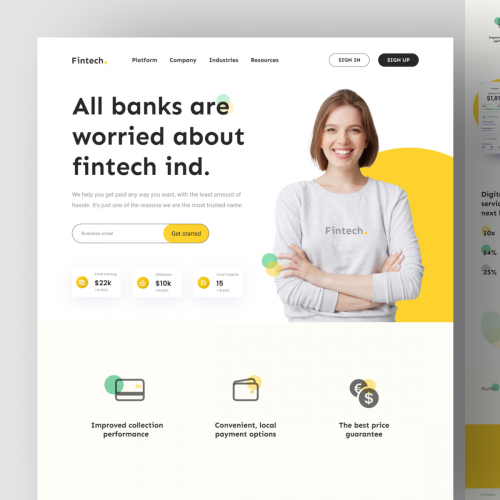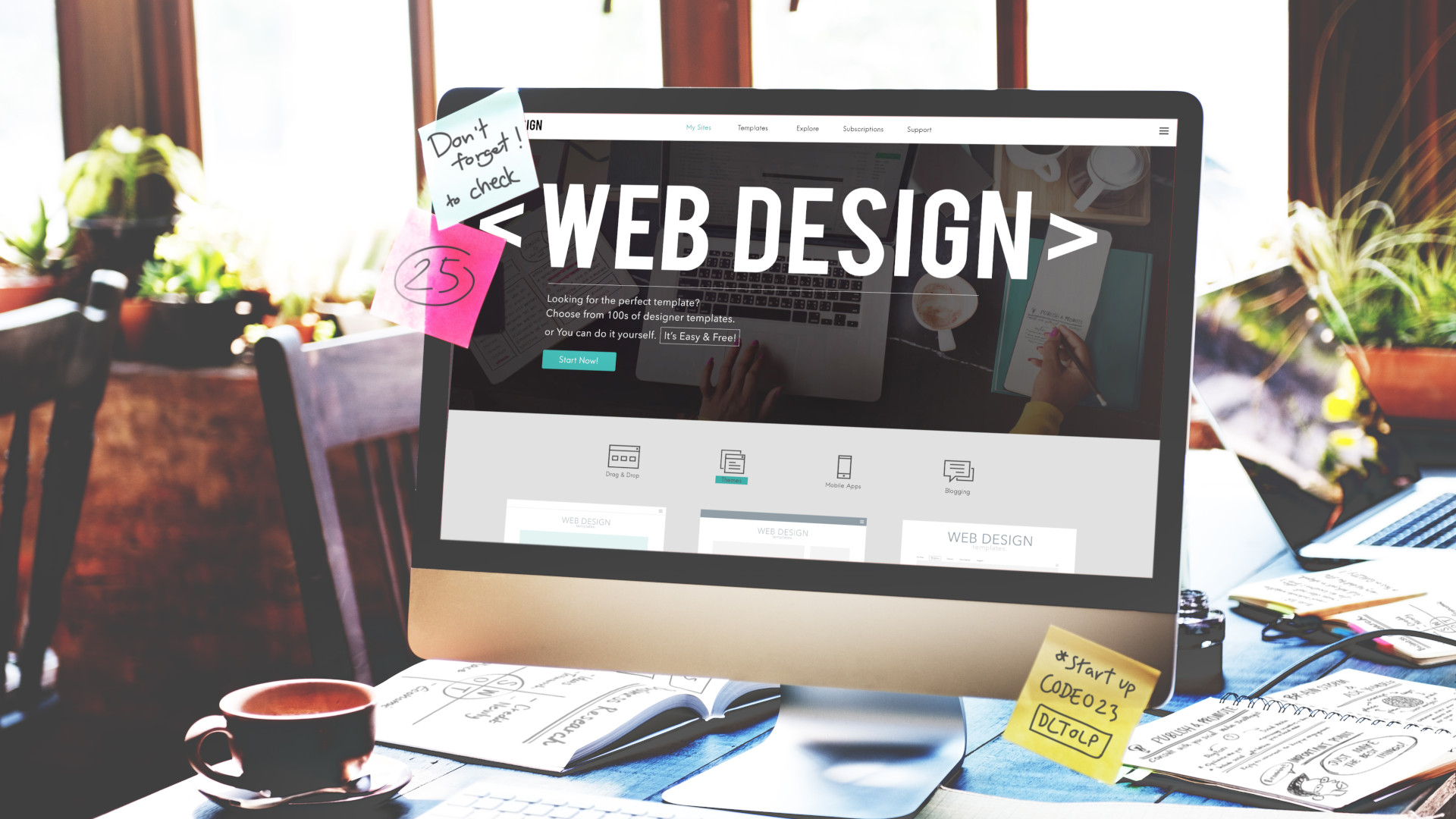Top Trends in Modern Website Design for 2024
The Power of User-Centered Web Site Style in Expanding Your Online Audience
In a progressively affordable electronic landscape, the relevance of user-centered site design can not be overstated. By focusing on the requirements and actions of users, organizations can develop web sites that not just bring in but likewise engage a varied target market. Effective style concepts-- such as user-friendly navigation and accessibility-- are important in cultivating user complete satisfaction and commitment. Recognizing how to utilize these principles efficiently increases vital questions about implementation and effect. What techniques can companies adopt to guarantee their layouts resonate with users and eventually drive growth?

Understanding User-Centered Design
User-Centered Layout (UCD) is a fundamental technique to web site growth that focuses on the demands, choices, and habits of end users throughout the design procedure. This methodology stresses recognizing customers deeply-- through research study techniques such as meetings, studies, and use testing-- to produce a website that resonates with them. By including customer responses at every stage, developers can guarantee that the end product straightens closely with customer expectations.
UCD promotes iterative design, where models are evaluated and fine-tuned based on user interactions and experiences. This cycle not only boosts functionality yet also cultivates a sense of possession amongst customers, as they feel their input is valued and impactful. Additionally, UCD assists recognize potential obstacles and pain points in the customer trip, permitting designers to deal with these obstacles proactively.
Eventually, embracing UCD causes sites that are more intuitive, interesting, and efficient. By placing customers at the center of the layout procedure, companies can produce digital experiences that not just draw in yet likewise maintain their target market, driving better contentment and loyalty. In an affordable on-line landscape, this strategy is vital for attaining sustained success.
Secret Concepts of Individual Experience
A successful individual experience (UX) pivots on numerous essential concepts that direct the layout process and improve interaction in between customers and the web site. Functionality is critical; the site should be intuitive, permitting individuals to navigate quickly and discover info quickly. This includes clear labeling and a sensible framework that minimizes cognitive tons.
Secondly, access plays an important function in ensuring that all users, regardless of their capabilities or disabilities, can effectively engage with the internet site. Integrating alt text for images, key-board navigating, and screen visitor compatibility promotes inclusivity.
Consistency is an additional essential concept. A cohesive style language, from color pattern to typography, aids individuals build experience and trust with the internet site (Website Design). It additionally reinforces brand name identification
Additionally, responses mechanisms are essential. Individuals need to receive prompt and clear responses to their activities, whether via visual cues or confirmation messages, which boosts their self-confidence in browsing the site.
Last but not least, mobile responsiveness can not be ignored. With an enhancing number of customers accessing sites using mobile gadgets, a layout that adjusts flawlessly to different screen sizes is important for maintaining a positive customer experience.

Benefits for Online Interaction
Reliable online engagement supplies many benefits that can considerably boost a site's general efficiency - Website Design. By promoting significant interactions in between customers and the internet site, organizations can cultivate a devoted audience that returns with consistency. Engaged customers are a lot more likely to share material, thus boosting natural reach and attracting brand-new site visitors with word-of-mouth promotion
Boosted online involvement additionally results in improved individual fulfillment. When individuals locate an internet site that resonates with their needs, they are much more inclined to explore its offerings thoroughly, which can result in higher conversion prices. Furthermore, appealing web content encourages customers to spend even more time on the website, minimizing bounce rates and favorably affecting online search engine ranking algorithms.
Furthermore, reliable involvement gives important insights right into customer choices and behaviors (Website Design). By assessing individual interactions, companies can customize their content and layout methods to fulfill the developing assumptions of their target market. This flexible technique not only improves interaction however additionally reinforces the brand's reputation as responsive and user-centric
Eventually, prioritizing on the internet involvement through user-centered style creates a successful ecosystem where both the organization and the audience benefit, resulting in continual growth and success in the electronic landscape.

Techniques for Reliable Design
To optimize the benefits of online interaction, using particular strategies in website layout is paramount. First, instinctive navigating their explanation is important; users must quickly find information without complication. A well-structured menu, clear tags, and a sensible hierarchy enhance the customer experience and reduce bounce prices.
Second, receptive design is critical in today's multi-device setting. Ensuring that a site adjusts seamlessly to different screen dimensions fosters ease of access, therefore fitting a wider audience. This adaptability not only boosts customer complete satisfaction however likewise positively influences online search engine rankings.
Third, using aesthetic hierarchy overviews users' focus to vital aspects, such as contact us to action (CTAs) Utilizing contrasting click to read more colors, varying font dimensions, and strategic spacing can properly direct individuals toward preferred activities, promoting better interaction.
Additionally, executing regular branding throughout all pages constructs trust and recognition. A cohesive shade typography, imagery, and system reinforce brand identification and develop a professional appearance.
Last but not least, maximizing loading click for info speeds is crucial. Customers are much less likely to involve with a slow-loading website, making efficiency optimization a vital element of efficient style. By integrating these methods, website makers can enhance customer experience and ultimately grow their on-line target market.
Real-World Success Stories
Success stories in user-centered web site design show the tangible benefits of prioritizing customer experience. One notable example is the redesign of the internet site for the nonprofit organization, Charity: Water. By including user feedback, the company structured navigating and emphasized storytelling via impactful visuals. Therefore, they experienced a 250% boost in on the internet donations, demonstrating exactly how an user-friendly style can drive customer engagement and assistance.
One more compelling case is that of Airbnb, which used user-centered style concepts to improve their booking procedure. By streamlining the user trip and incorporating personalized referrals, they considerably lowered site abandonment rates. This emphasis on individual experience added to a profits growth of over 70% in a solitary year, underscoring the relationship between properly designed user interfaces and economic success.
Furthermore, the e-commerce giant, ASOS, executed individual screening to improve their mobile application. By dealing with customer discomfort points, they achieved a remarkable 30% boost in mobile sales. These examples highlight that spending in user-centered layout not just improves customer satisfaction however likewise drives concrete service results, strengthening the vital role of customer experience in achieving on-line growth.
Final Thought
By prioritizing customer requirements and preferences, businesses can create user-friendly and available digital experiences that foster loyalty and drive conversions. The assimilation of user responses throughout the design process not only lowers bounce prices yet also motivates exploration.
User-Centered Style (UCD) is a basic strategy to site development that focuses on the requirements, preferences, and actions of end users throughout the design process. By including user comments at every phase, developers can ensure that the last item aligns very closely with individual expectations.
A successful user experience (UX) hinges on a number of crucial principles that assist the design process and enhance communication in between individuals and the web site.Success tales in user-centered internet site layout show the concrete benefits of prioritizing user experience. These examples highlight that investing in user-centered design not only enhances user complete satisfaction yet additionally drives substantial company outcomes, enhancing the vital duty of customer experience in attaining online development.